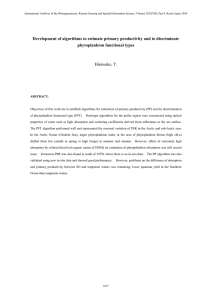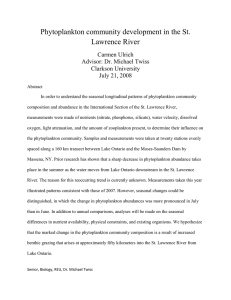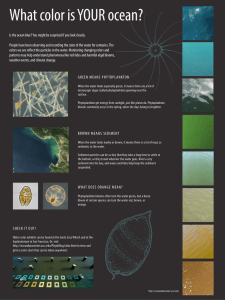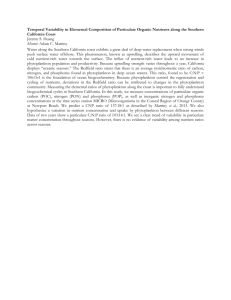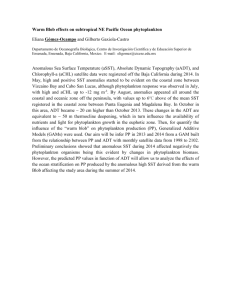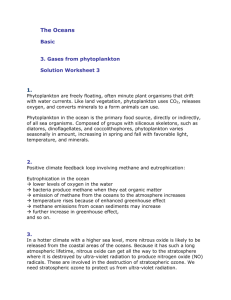Phytoplankton Background
advertisement
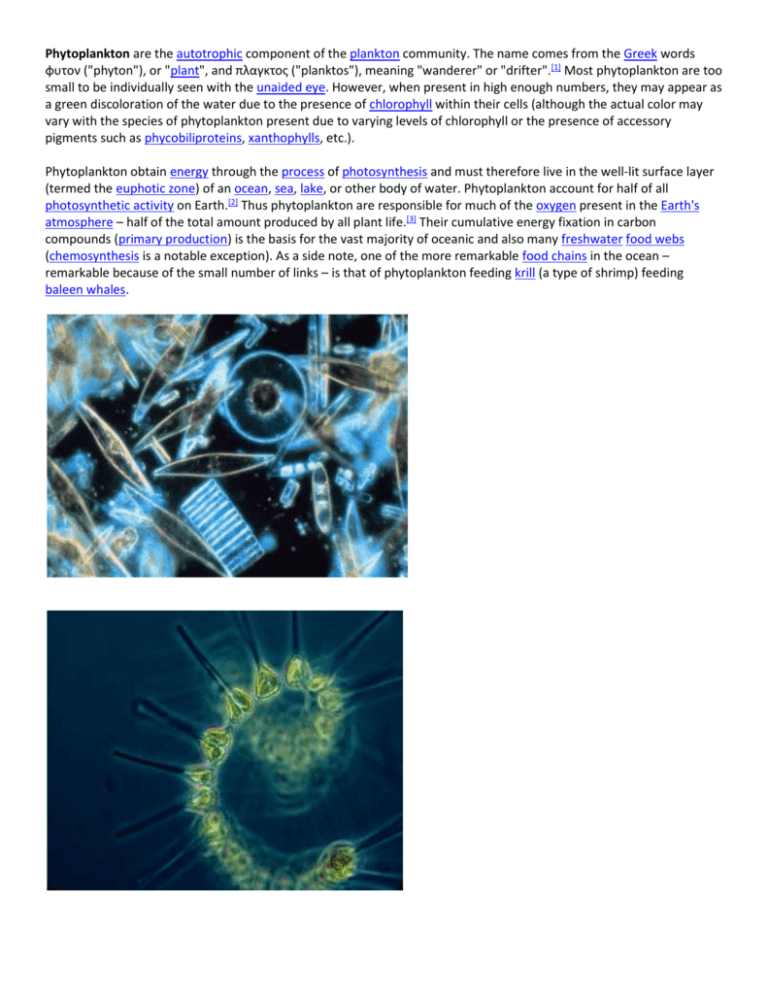
Phytoplankton are the autotrophic component of the plankton community. The name comes from the Greek words φυτον ("phyton"), or "plant", and πλαγκτος ("planktos"), meaning "wanderer" or "drifter".[1] Most phytoplankton are too small to be individually seen with the unaided eye. However, when present in high enough numbers, they may appear as a green discoloration of the water due to the presence of chlorophyll within their cells (although the actual color may vary with the species of phytoplankton present due to varying levels of chlorophyll or the presence of accessory pigments such as phycobiliproteins, xanthophylls, etc.). Phytoplankton obtain energy through the process of photosynthesis and must therefore live in the well-lit surface layer (termed the euphotic zone) of an ocean, sea, lake, or other body of water. Phytoplankton account for half of all photosynthetic activity on Earth.[2] Thus phytoplankton are responsible for much of the oxygen present in the Earth's atmosphere – half of the total amount produced by all plant life.[3] Their cumulative energy fixation in carbon compounds (primary production) is the basis for the vast majority of oceanic and also many freshwater food webs (chemosynthesis is a notable exception). As a side note, one of the more remarkable food chains in the ocean – remarkable because of the small number of links – is that of phytoplankton feeding krill (a type of shrimp) feeding baleen whales.

